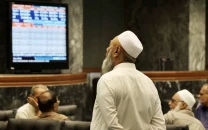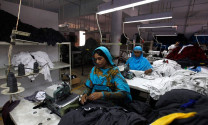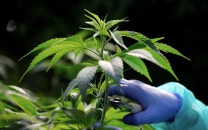Tree plantation drive – some lessons
Despite promise, heroes of programme have not yet been recognised, rewarded

Pakistan pioneered the billion-tree plantation drive, which got underway in Khyber-Pakhtunkhwa (K-P), and successfully achieved the target well before the deadline.
The successful experience was later scaled up to 10 billion tree tsunami covering the entire Pakistan. This unique initiative has met the requirement of Bonn Challenge besides earning goodwill at the international level with support for the global and national environmental agenda.
The politically backed initiative is aimed at investing in the future depending on the tree species being planted, the types of forest and their rotation age.
The billion tree and now 10 billion tree plantation programmes have highlighted numerous local and national success stories. For instance, the relentless efforts of forestry professionals, some of whom even lost their lives while clearing encroachments in K-P.
Community-level commitments and voluntary contribution by individuals and groups, students, religious scholars, women and peasants all count towards the achievements.
All of these sacrifices and achievements are home-grown that have led to such a big success and they are still important for the protection, post-plantation care and continuous care till the maturity of these plants to ensure environmental sustainability.
Pakistan has got a variety of forest types spread over various agro-ecological zones but most of the land area is arid and semi-arid receiving less than 500mm of annual rainfall. This is not suited for natural green vegetation due to low precipitation and this is the most critical challenge in the way of extending the forest cover.
Apart from the forest types, the forest categories and management systems also vary in various parts of the country such as extensive natural forests growing over large areas under state control or even privately managed forests, manmade forests like the irrigated forests in the plains of Punjab, ie Changa Manga, and other such areas.
Social forestry, community forestry and farm forestry are other types of private forestry, which are getting more attention due to increased awareness and support from public sector institutions dealing with such forestry practices.
Public sector forest estates comprise only 7% whereas 93% of forests are owned either by the community or are village forests or privately owned. Social and community forestry, in fact, has the major potential to expand the forest cover in Pakistan.
Reward and recognition
As the billion and 10 billion tree programmes have shown great success, forestry professionals, community actors, women and students are waiting for recognition and reward.
The billion tree plantations were celebrated at a grand ceremony at the Convention Centre Islamabad in 2018 where the then K-P chief minister Pervaiz Khattak announced the upgrade and promotion of forest guards and foresters to the next scale, which Prime Minister Imran Khan as the chief guest greatly appreciated and encouraged as the right step that the professional foresters deserved.
However, over three years have passed but this announcement has not been implemented.
At the community level, no hero has so far been recognised or rewarded. Women’s involvement in forestry – a key to success – has never been recognised, although many advocates of the cause emerged during the mega plantation drive.
This is an indication of the lack of recognition of the key stakeholders and champions of the tree plantation campaigns.
Now come to the recognition of international actors, namely Miyawaki urban forest developers, though this forestry method is not suited for conditions in Pakistan.
PM Khan inaugurated the largest Miyawaki forest under the 10 billion tree plantation programme in Lahore last week.
Leaving aside the technical constraints in the Miyawaki method under the agro-ecological conditions in Pakistan, the basic argument is why national heroes have been ignored who sacrificed their lives, time and energies for the national cause.
This ignorance will demoralise the local and national heroes, who may become less enthusiastic in pushing the 10 billion tsunami drive.
The Japanese are wise enough who have rewarded their national heroes and encouraged them to better contribute to forestry in future as well.
Miyawaki may have done a marvelous job and service to forestry in Japan, which is suited to its specific ecological situation. Such a model of forestry may not be suitable for the ecological conditions and forest types in Pakistan, which should exercise great caution while replicating the model.
Pakistan must promote its own forest types and management systems suitable for its ecological conditions. Moreover, the country must promote its national forestry heroes, who have promoted social forestry, community forestry, farm forestry and even those forestry drives that have increased plantations on state land.
One such person is Robina Gul, who planted over 25,000 saplings of 13 different types in her small courtyard in her house in Najaf Pur, a village of around 8,000 people in the Haripur district of K-P.
This is a unique contribution by a woman towards promoting forestry culture that the country needs to encourage such plantations on a wider scale.
It is still not too late that we make a list of all those forestry champions and heroes who contributed to the programmes. Such recognition will go a long way in motivating others to join the post-plantation care and even create jobs in the forestry-related industry.
The writer is a PhD in natural resources management and masters in forestry besides serving as divisional forest officer in K-P
Published in The Express Tribune, August 30th, 2021.
Like Business on Facebook, follow @TribuneBiz on Twitter to stay informed and join in the conversation.













1733130350-0/Untitled-design-(76)1733130350-0-208x130.webp)









COMMENTS (4)
Comments are moderated and generally will be posted if they are on-topic and not abusive.
For more information, please see our Comments FAQ